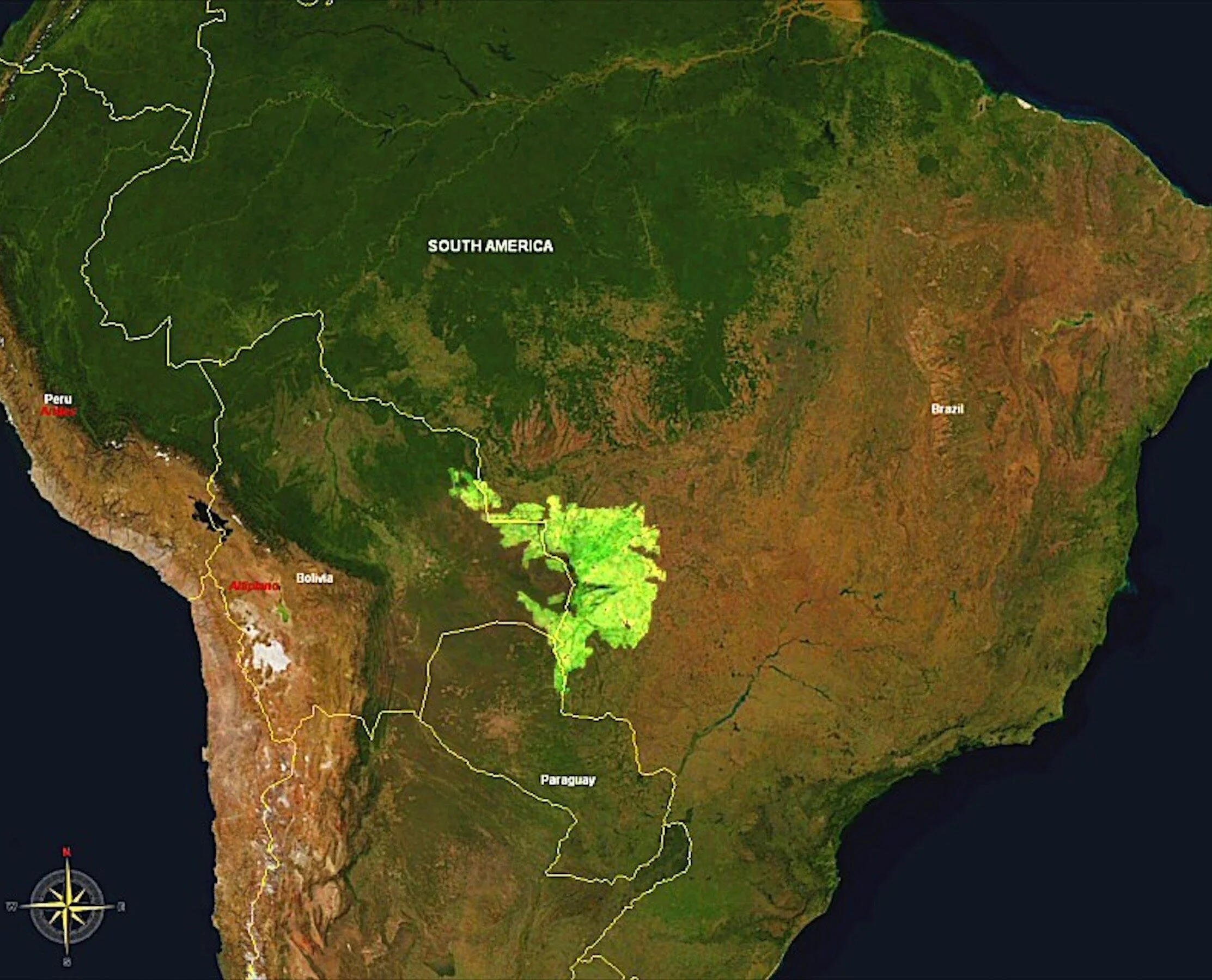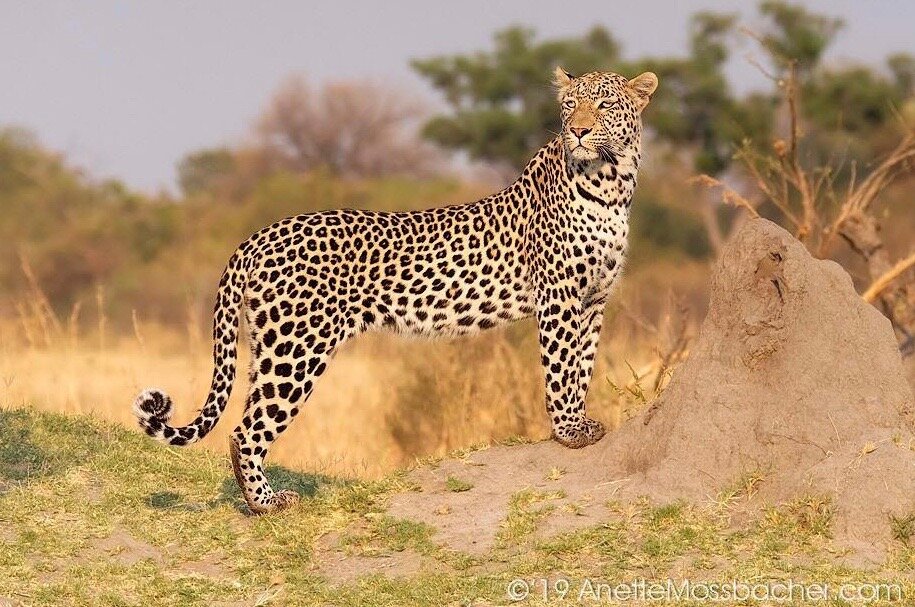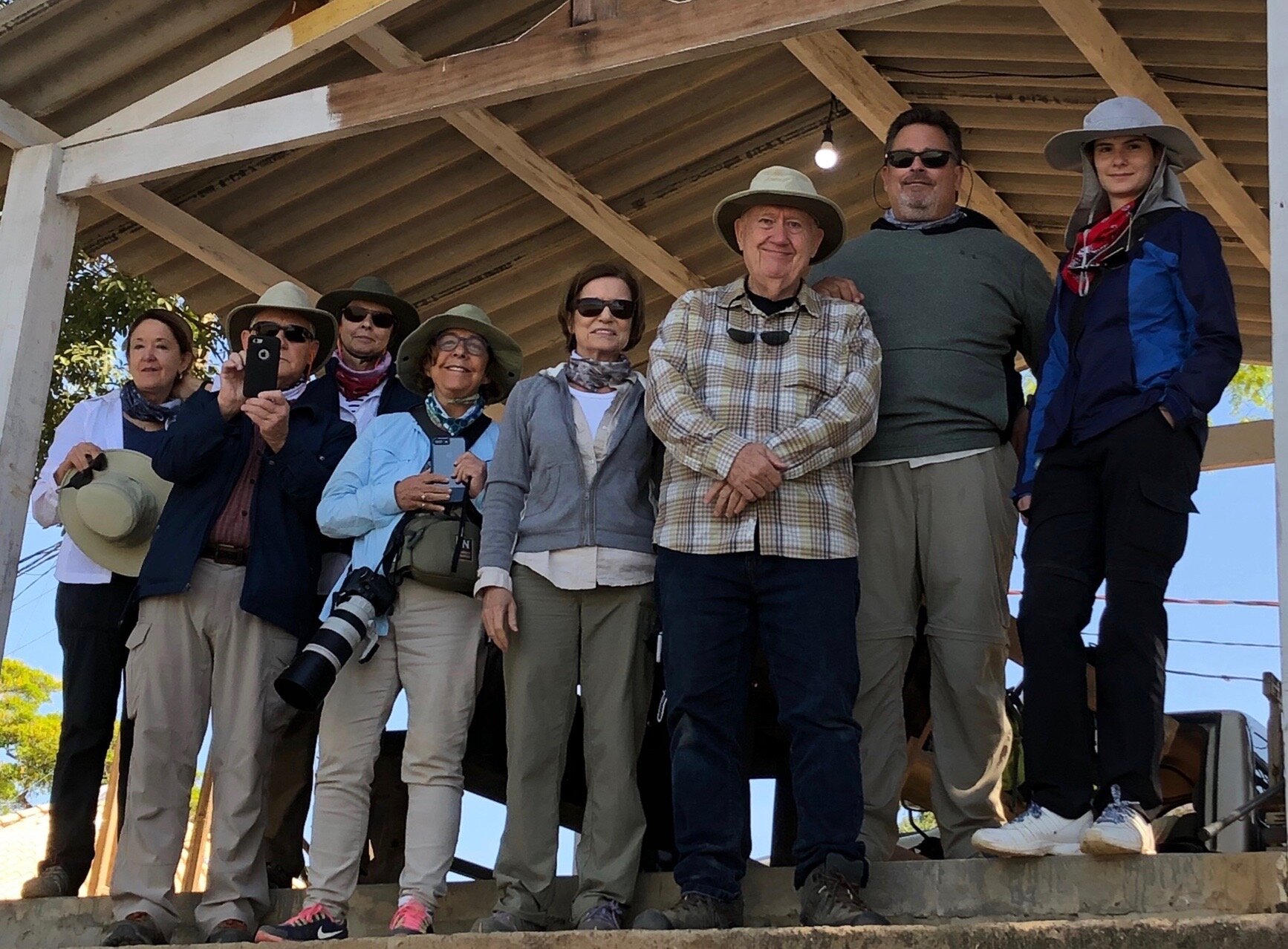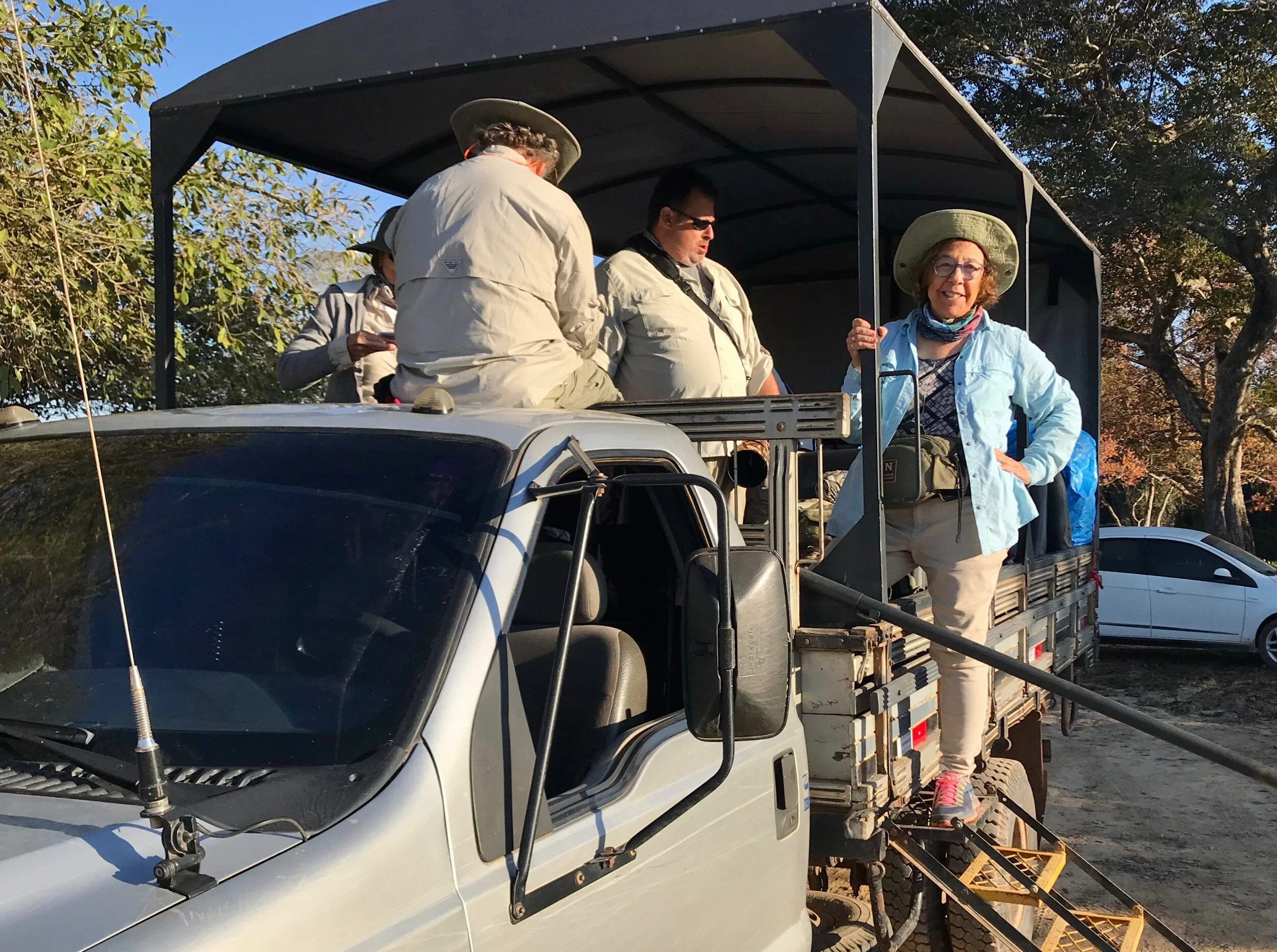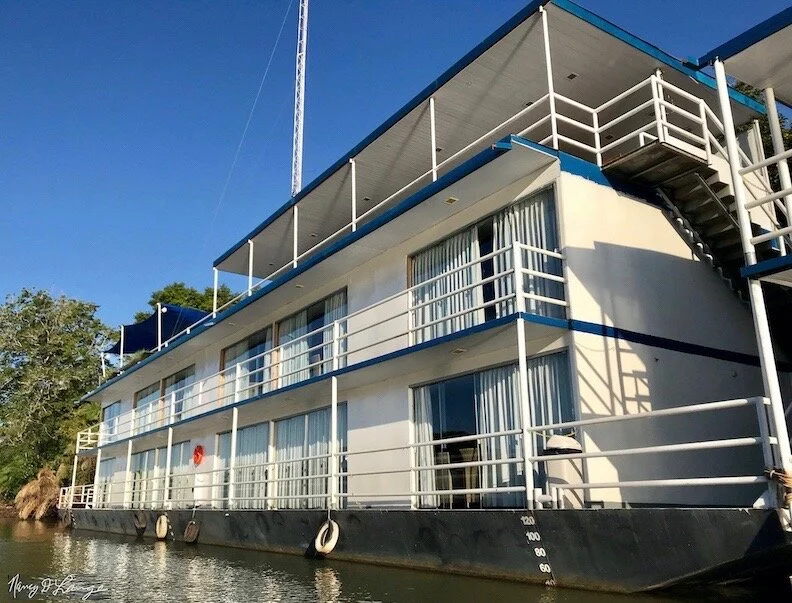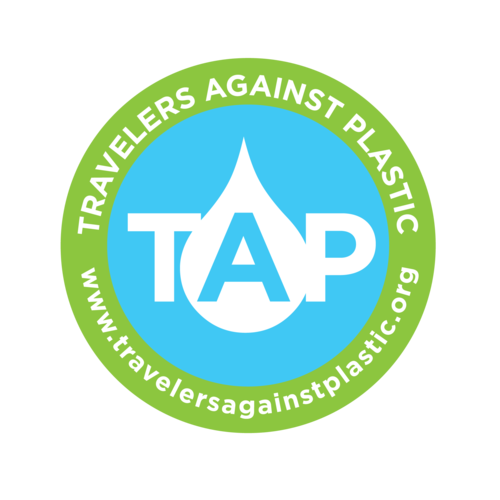Photographing Jaguars in the Pantanal
I traveled to the Pantanal to see and photograph jaguars in the wild. The trip was everything I’d hoped for and more! Image: ©Nancy Langer
Nancy Langer, Self described nature lover, armchair adventurer and avid photographer. She is also Co-chair of the NYC Sierra Photography Club.
In July 2018, I traveled to the Pantanal in Brazil. My primary goal for this trip was not just to see a Jaguar but also to get a good jaguar photograph.
What is the Pantanal ?
✓Trip Tips
What: Jaguar watching & photos
Where: The Brazilian Pantanal
How: Flight to Cuiaba, then over land and water.
Who: Adults, moderately active.
When: May - October
Notes: This experience is best with a professional guide. Contact us.
In Portuguese, the word "Pantanal" means wetland, swamp or marsh, and is a perfectly fitting name for this region. This Pantanal is the world's largest tropical wetland, a sloping basin in the western part of Brazil reaching into portions of Bolivia and Paraguay. It is home to a fantastic array of indigenous plant and animal life, including the jaguar.
Jaguars have lived in the western hemisphere for a long time, as attested by jaguar fossil remains of up to 130,000 years old found here. Jaguars were a prominent symbol in the life and culture of ancient Maya and Aztec civilizations.
Jaguar VS. Leopard, What is the Difference?
Although new world jaguars (Panthera onca) look like and are sometimes confused with Africa's leopards (Panthera pardus pardus,) they are very different cats.
The coats of both New World jaguars and leopards in Africa have spots called rosettes; however, unlike the leopards', the jaguars' rosettes have dots in the middle.
The jaguar is physically larger, too; this cat is the planet's third-largest, smaller only than the lion and tiger. Jaguars have a more stocky, thick-set body weighing up to 250 pounds, whereas the leopard is only about 175 pounds, with a lean and lanky build.
And their habitats are as different as their physical structure. The leopard's African savanna habitat is much dryer than the Brazilian Pantanal.
The Pantanal has distinct wet and dry seasons. In the rainy season (December through March), water levels can be 6-15 feet (1.8-4.6m) higher than in the dry season (May through October), flooding the flat plains. Seeing them for the first time, early European explorers thought the vast flooded plain was an inland ocean, but the water is fresh, not salty.
Jaguars in the Pantanal live mostly in dense underbrush along the rivers. They are strong swimmers, very much at home in the water. Jaguars are stalk-and-ambush hunters with a powerful bite. Their prey, often taken in the water, includes caiman, capybara, otters, etc.
We visited in the dry season when the wildlife is more concentrated and easier to spot in the thick brush from our vantage point in the boats. For a few days, we even slept on a boat - the Flotel.
Our group consisted of seven nature photographers, mostly from Texas, the home base of our photography leader, Kathy Adams Clark. I flew from New York, my home base, to Sao Paulo and then transferred to a flight to Cuiaba, Brazil, where I met the group.
From Cuiaba, we traveled to the Southwild Pantanal Lodge on the Pixaim River. Jaguars are not "supposed" to be along this river, but it was here that a single, unforgettable sighting would link me to a beautiful, young female jaguar forever. More about her later.
After two exciting days at Pantanal Lodge, our adventure continued with a "memorable" overland trip to Porto Jofre.
Getting to the habitat that supports wildlife can be an adventure in and of itself. That was certainly the case with our trip to Porto Jofre – our last overland point before we boarded speed boats to our next stop: the Flotel.
We traveled in an open vehicle overland on a dirt road called the Transpantaneira, covering 91.5 miles / 145km in about 4 hours. This road is raised about 10-20m (32 - 66ft) above the Pantanal for the first 4.5miles (7km) – then drops onto its flat expanse. The remainder of the trip just a few feet above the marshland.
The official entrance to the Pantanal. Of course I had to pose for a tourist picture to prove I was in the Pantanal! Image: ©Cathy Adams Clark
We found the Pantanal entrance gate! We stopped to commemorate our official entrance - and of course, I had to pose for a tourist picture to prove I was in the Pantanal! This is where the real "fun" began!
During the drive to Porto Jofre, we crossed 122 wooden bridges in various conditions and stages of disrepair. In several places, the guys had to get out to move planks around so we could pass.
The Pantanal’s annual flooding wreaked havoc with its wooded bridges, adding extra challenge to the journey. Image: ©Roy Leslie
Says Charles Munn, conservationist, and Southwild founder: The bridges are being repaired and replaced – between 20 and 30 of them are now cement.
There was dust EVERYWHERE!
Our driver handed out masks before our trip. He was ahead of his time, I could have used that mask today!
This is the view from one of the 122 bridges. Notice the three large caimans (headed for the great blue heron) in the marsh below. Image: ©Nancy Langer
Finally, we arrived at tiny Porto Jofre on the banks of the Cuiaba River. At this point the Cuiaba is 200 m/ 656 ft wide. We left our open land vehicle and followed the river in speed boats until the Cuiaba meets the narrower Piquiri River (328ft /100m wide ). From the Piquiri river, it was only 2.4 miles / 4km upstream to the SouthWild Flotel.
We stayed at our Flotel for four nights. Each morning we would board an open motorboat to look for Jaguars. Each boat held ten people, including our guide/boat driver and Kathy. It was very hot, and we had to take care to guard against sunburn. And, of course, we all wore lifejackets.
Jaguars are very much at home in and around water. Watching from on the water in a small boat, we were able to observe them as they lived their lives. Image: ©Nancy Langer
We stayed on the rivers for several hours each day with a break for lunch. The boat drivers were extremely skilled and knowledgeable of the area. They frequently communicate with each other, so when one spotted a Jaguar, he would send the signal, and off we would go.
The guides/boat drivers are also very courteous. They made sure every boat of tourists had an opportunity to get an unobstructed view and photograph.
Our jaguar-viewing boat was a great vantage point to spot wildlife other than jaguars, including caiman, birds, capybara, and giant river otters.
My Camera Equipment - and a Confession
Resting in the morning sun, a beautiful jaguar takes time out to watch the watchers. It makes for a great photo op! Image: ©Nancy Langer
My camera equipment: Canon D70 SLR with a rented Canon 100-400 lens. It was the 3rd time I rented this wonderful lens for nature trips. A Sony Mirrorless camera with a 16-70 mm lens and my iPhone. And a tripod.
One Confession: Handling the 100-400 heavy lens was very difficult for me—I'm surprised we both survived, but I got some great pictures! I'm a nature lover and armchair adventurer at heart, and hearing about this trip to the Pantanal sounded exotic. When would I ever have a chance to photograph a jaguar again?
Our Flotel on the River
The best part of staying on the river/Flotel was that I got a chance to see and photograph those gorgeous Jaguars every day! And we attended study sessions about indigenous wildlife after dinner given by young people documenting the Jaguars and other cats.
Says Charles Munn, "Our two top jaguar boat drivers each have 6000 and 5000 hours of daytime observation of jaguars with guests in the boat...They know what the jaguar will do next before even the jaguar knows it."
The Flotel rooms are not fancy but very adequate, spacious and comfortable, with air-conditioning and stall showers. I had a roommate on the Flotel. The dining room was sufficient also with good, tasty buffet food. The Flotel is anchored at the edge of the river with the bush on one side, water on the other.
After our four-night stay on the Flotel, we returned to the Pantanal Lodge on the Pixaim River for another night. And that brings me back to my special connection with the jaguar that no one knew was there.
Meet Curiosa, The Jaguar I Got to Name for Science
My images were the first to identify this new-comer in a territory not known to be a jaguar area! I got to name Curiosa for the researchers! Image: ©Nancy Langer
Meet Curiosa. Her name means curious female in Portuguese. I had the honor of officially naming her through the Jaguar Identification Program.
The Jaguar Identification Project is a non-profit conservation organization that collects data on Jaguars in the Pantanal. Abigale Martin saw my photograph and requested additional information and images. From this information, they determined that this jaguar, a female, had never been identified before. And they invited me to name her!
I wanted to name her “Nancy” but couldn't because it had to be related to the Pantanal or some specific jaguar behavior. My jaguar seemed curious while we were photographing her, therefore, Curiosa.
When Your Travel Photos are Citizen Science
Jaguar is very much at home in the water. From our boats we had a perfect view. Image: ©Nancy Langer
I learned from my experience in submitting images to The Jaguar Identification project: Never delete an image! The folks at the JIP were pretty confident that mine was an unidentified animal. They requested any other photos I had – including those from behind. I had already deleted a – shall we say – departing shot - of the back end of our mystery cat. But I had not emptied the trash! That retrieved image was the one that positively identified my jaguar as a never-before identified female.
I had not only managed to accomplish my trip's goal – but I was able to find an unidentified jaguar and name her! A few months later, Abigale contacted me to say that Curiosa had cubs. I'm a grandmother!
Our Pantanal Adventure Continues
Jaguar was not the only Pantanal cat we saw, this ocelot made its appearance at the Southwild Pantanal Lodge. Image. ©Nancy Langer
After our return night in the Southwild Pantanal Lodge, we flew to Campo Grande in the Southern Pantanal for the second leg of our Brazilian adventure. There we spent a few days in Mato Grasso do Sul's (the south) grasslands, where we saw more and different wildlife and visited the famous sinkhole, but that is another story for next time. Our entire Brazilian tour was about ten days.
A note about jaguar conservation: From Nancy: Though international trade in jaguars is prohibited, they are still listed as Near Threatened on the IUCN Red List due to conflict with ranchers, farmers, and habitat loss.
✍︎From the Editor: Tours like this promote conservation by turning live, healthy jaguars (and other wildlife) into a source of income for guides and others. Humans are fast encroaching on jaguar terrain. At the Southwild jaguar properties, tourism-generated revenue is used to compensate ranchers and farmers for livestock losses caused by the big cats.
The jaguar is the biggest cat in the western hemisphere - and well worth the trip to the Pantanal to meet it. Image: ©Nancy Langer


